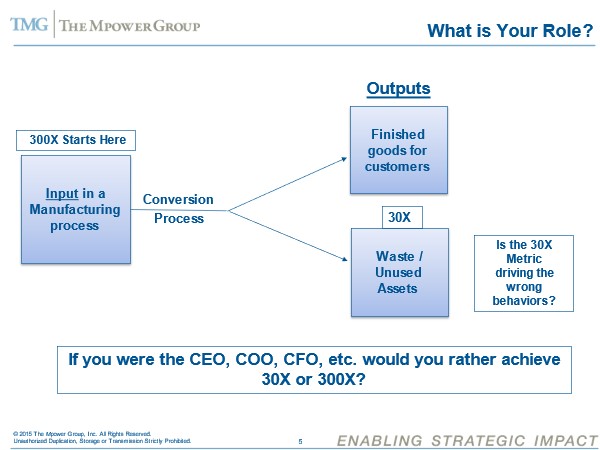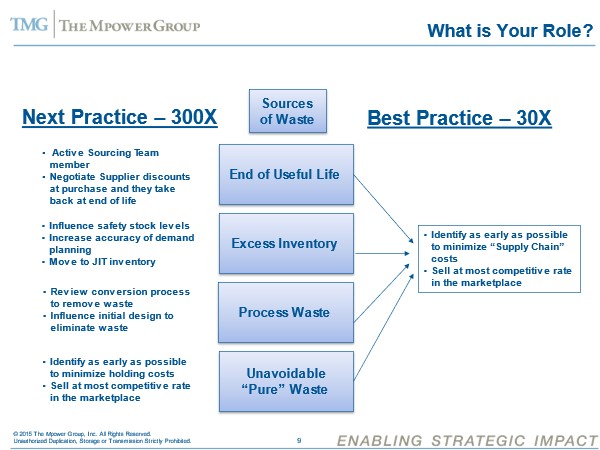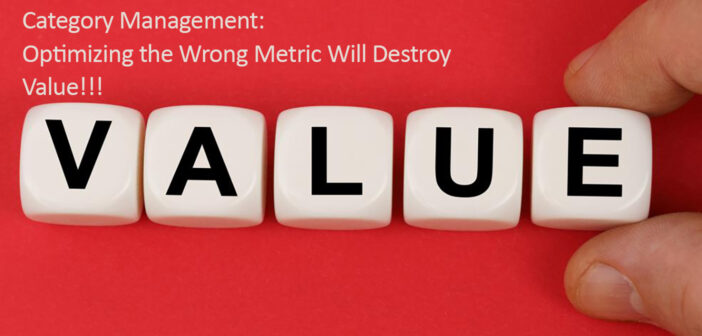Most organizations have a function called Investment or Asset Recovery and if you are in Supply Chain or Category Management, you should be intimately familiar with it. Their goal is to take the “waste” or excess from the conversion process and turn it into revenue – fairly simple proposition And their success is measured by how much “revenue” they can generate.
“In fact, professionally-run IR Departments return over a 30X bottom-line net profit for every dollar invested in investment recovery operations, making it among the most productive departments in any organization!” This is considered Best Practice. Let me offer a Next Practice that will return 300X!!!
First, let me offer a simple example to illustrate. Are you better off trying to clean up the waste generated by the smokestacks by any industrial site or are you better off changing the composition of the raw materials and the conversion process to eliminate the waste from being generated? The answer is fairly obvious and this is where the role of the Category Manager becomes critical. Here is a simple illustration:
The more “revenue” being generated from the waste or unused assets, the more the Total Cost is? In fact, the goal should be to reduce that number as much as possible, NOT to increase it. 
The role of the Category Manager and the Category Manager strategy MUST incorporate the waste generated or the end of life disposition. They must incorporate the “demand” and the conversion process to ensure that the least amount of waste is being generated thus reducing the “revenue” being generated from the waste, not increase it. This type of supply chain context is what is sorely missing from most Category Management discussions today because most of it is focused on the “fulfillment” side of the Supply Chain only. Here is a factoid from CAPS research: “ . . . . Only 29% of the survey respondents said their investment recovery groups are active in trying to prevent generation of surplus assets . . . . .” when in fact that should be their primary goal and this is where the role of the Category Manager becomes critical. We normally find that there is very little alignment and integration between the Asset Recovery function and the Category Management function and that is a major risk.
Here is another way to look at this:
So forget about maximizing the “revenue” from waste – in fact, your goal as a Category Manager should be to minimize that “revenue”.


